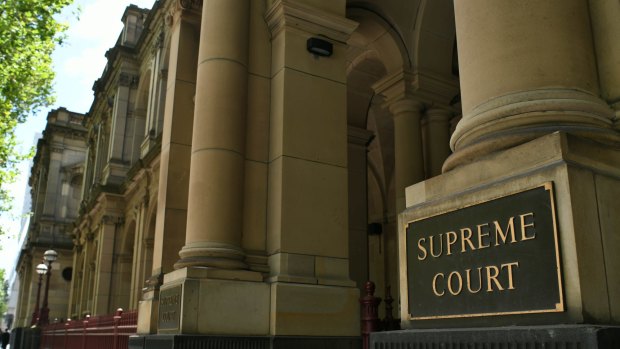A very noisy section of the commentariat believes that the biggest threat to free speech in Australia is anti-discrimination law, particularly the "offend and insult" provision, section 18C. They are wrong. A far bigger threat is defamation law.
Yes, it's a threat to the media, and to investigative journalism particularly. But it's also a threat to ordinary people simply posting their views on social media. And it's high time we pressured politicians to either scrap and rewrite this archaic law or, at least, to extensively amend it.

The National Uniform Defamation Law has not been updated since 2005.Credit: Vince Caligiuri
The National Uniform Defamation Law has not been updated since 2005 when, after years of wrangling, all states and territories agreed to amend their own laws to be consistent with each other. That was a big step forward. It put a cap on most payouts and enshrined various defences, including honest opinion and a "reasonableness" defence for stories of public importance.
The legislation has not been revisited by politicians since then, but the judges have been active. Their decisions have shot the act full of holes. Matt Collins, QC, the man who literally wrote the textbook, describes the law now as "Frankenstein's monster".
The "reasonableness" defence purports to allow journalist to make errors in a story as a whole but to escape a finding of defamation if they've acted reasonably to establish the truth. That defence, too, has been made virtually impossible to win.
"As soon as a publisher is found to have made a factual error and no matter how minor, in practical terms, the plaintiff succeeds," Collins said. "In any case involving a media defendant … it's [you must prove] truth or nothing."
So what? I hear you say. Surely journalists should write the truth? We should, or at least try to. But that's not exactly what we're talking about. Say a reporter hears from a series of unrelated whistleblowers that a politician is taking bribes. One whistleblower is on the record, and named. The other three are anonymous.
The journalist has some circumstantial evidence: the politician's record of decision-making, the sudden appearance of a $1.7 million property in his investment portfolio, photographs of him with the alleged briber at a party fundraiser.
The politician denies it and says nothing further. After weeks of investigation, the newspaper and its highly paid lawyers confer then decide to publish. The politician sues.
Discovery, pretrial arguments and adjournments mean that it's 12 months before the first interlocutory hearing. One of the whistleblowers has died, and the other has got cold feet and decided she cannot give evidence. The politician believes he has identified who the other off-the-record witness is and is threatening his job. He too drops out. Two years down the track, only the resolute on-record witness is left.
He is only able to give evidence for parts of the story. The judge has accepted the "imputations" that the politician's lawyer has argued the article raises, even though those words are never used in the publication itself.
So the newspaper is required to prove to the satisfaction of a court, two years after the story was written, that the imputations drawn by the politician's lawyer are literally true. It decides the risk of costs is too high, and one or two minor errors of fact mean the judge (or jury) will be unsympathetic. It cuts its losses and settles, paying $300,000.
The politician installs an Olympic-sized pool. Five years later, the Independent Broad-based Anti-corruption Commission finds he was corrupt.
Easier, then, to never write the story in the first place. "There are important, high profile stories that don't get told because of the chilling effect of defamation law, and the high cost of actions," Collins says.
So what is needed? A few amendments, at least.
First would be to adopt the opening section of the new British defamation law, in which a plaintiff cannot even get a claim accepted without proving that they have a reputation, and that the publication has caused "serious harm" to it.
Second would be to reinstate "reasonableness" as a defence, and to insist that courts recognise, as Collins argues, that "reasonableness is not perfection".
Third would be what's known as the "single publication rule". Under the current law, plaintiffs have a year after publication to lodge a writ. But courts have decided that, since everything is now online, there is, effectively, no time limit on how long a defendant might wait to make a claim. Australia is virtually alone in the world on this.
Fourth would be to stop defamation law being decided on the "imputations" that the court decides can be drawn from a publication. Why not just ask if these words, as published, defamed that person?
Fifth would be to address the problem of the internet: who is the publisher? As NSW Justice Judith Gibson wrote in 2015, "Social media and online publication not only require reconsideration of almost every aspect of defamation law from publication to defences to quantum of damages, but appear to be contributing to the rise in the number of litigants in person, as most persons suing and being sued are ordinary members of the community."
These are just the most basic reforms.Unfortunately, in the current political environment, while the loudest mouths in the Australian media are busy tilting at the 18C windmill, a much bigger threat to their and everyone else's free speech is being virtually ignored.
Michael Bachelard is The Age investigations editor.